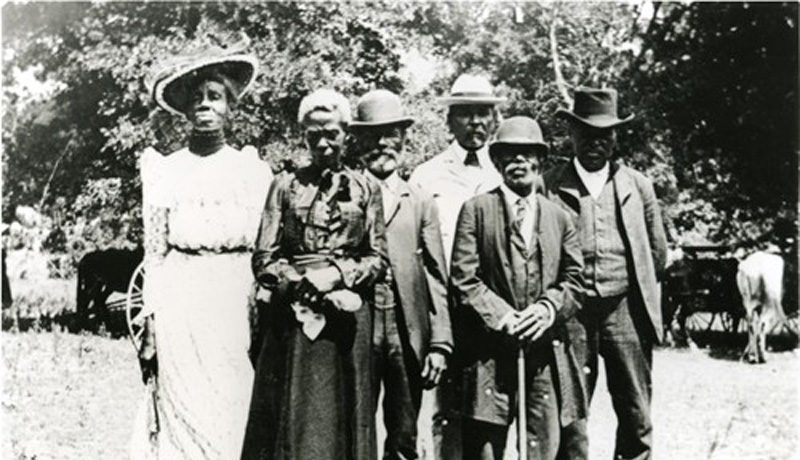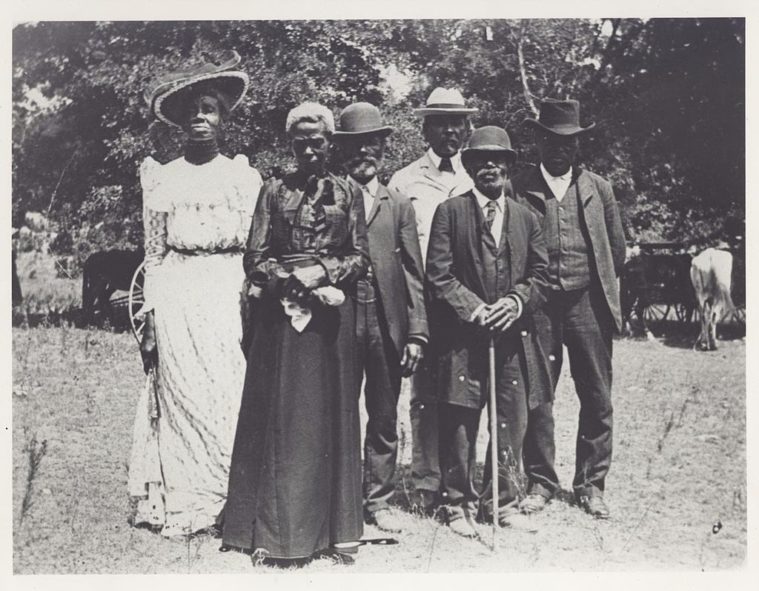
Juneteenth and the Myth of Texas’ Independence
'Tis the season to take a hard look at our epic history, and face some ugly truths.


With Juneteenth fast approaching, now is a good time to talk about Black history in Texas, and an even better time to cut through the myths and get to the ugly facts. Almost from the outset, the historical memories of the Texas independence movement have conflated truth and tall tales. And since the State Board of Education is clearly not going to untangle the two, it is important to challenge the dominant Anglo interpretation of our history by taking another look for ourselves.
In early March 1836, a group of nominally Mexican citizens met in the small Texas town of Washington-on-the-Brazos and declared their independence from Mexico. Their Declaration of Independence charged the Mexican government with oppression and ineptitude. It accused Mexico of failing to protect the life, liberty and property of Mexican citizens. Propaganda in newspapers and among those who attended the meeting sought to link their grievances with those of the American revolution. In their view, Mexico sought to enslave them, the true defenders of Texas liberty.
Fifty-nine people attended the convention, but the declaration was principally the product of George C. Childress, a Nashville lawyer who had been in Texas for a little over a year, and who had apparently shown up at the convention with the declaration already prepared.
Of the 59 delegates representing the Mexican province of Cohuila y Tejas, only two, José Antonio Navarro and his uncle José Francisco Ruiz were Tejanos or “Native Texans.” Only 10 delegates had been in Texas for more than six years and 15 had arrived within the previous 12 months. Samuel Price Carson, who was elected Secretary of State of the Texas Republic, had been a Texas citizen for about a week.
Among other things, the document complained that Mexican rule was conducted by a “hostile majority in an unknown tongue” called Spanish. As speakers and writers of the “unknown tongue,” and not fully fluent in the English language, it is not certain that Navarro and Ruiz possessed a full understanding of the document to which they affixed their names, and its many implications. By full understanding, I mean the degree to which Anglos rapidly racialized Texas government after 1836. For instance, the 1836 constitution extended the rights of citizenship to free Whites and to Tejanos who were not Black or Indian, something in flat violation of the federal Mexican constitution.
Women, Blacks, and Indians did not participate in the convention.
The Texas revolt was an important nineteenth century historical event, with consequences not only for Mexico and the United States, but particularly for the indigenous populations of both countries. What followed was a race war.
The past 174 years have seen a variety of historical interpretations of this event. The majority have taken the claims of the “revolutionaries” at face value. Generations of Americans know at least something about the last stand at the Alamo, or about the patriotic loins of the “Yellow Rose of Texas,” who supposedly distracted the Mexican leader Santa Anna at the Battle of San Jacinto.
Mexican and Tejano interpretations of San Jacinto and its after-effects, while not as prevalent, have nonetheless been available and have been discussed by professional historians for some time.
Still missing from the debate has been a modern and comprehensive African-American interpretation of these events.
Unfortunately the existing literature on African-American perspectives about the Texas Revolution still largely consist of “great man” or “contribution school” narratives that either attempt to fit the Black experience in the Lone Star State within the “Gone to Texas” framework, or consist of newer, white-authored narratives that are fine as social history but fall a step short in fully discussing and exposing the extent of historical racism in Texas.
In short, what has been missing is an authentic and critical African-American perspective.
As with most myths, many secrets and misunderstandings persist about the Texas Revolution. One of the more underappreciated aspects of the conflict was that it was largely a race war, with Anglo Texans secure in their self-perception of cultural and intellectual superiority vis-à-vis Tejanos, Indians and Blacks. For instance, Childress handily summed up the prevailing Anglo attitude at the time when he opined that Mexicans were “a semi-civilized set, unfit to be free and incapable of self-government.”
Regarding Blacks, some Anglos such as Stephen F. Austin occasionally conceded that slavery was a moral evil but simultaneously argued that it was the only realistic option for economically developing the vast prairies of Texas. In classic southern fashion, many also used racism as a justification for enslaving African-Americans; blacks were considered biologically and culturally inferior and were in need of white protection and guidance. This point of view could be considered the “moderate” position of the time.
Texas did have its share of virulent and violent defenders of slavery and the slave trade —these men regarded the institution as a positive good and a civilizing school for “savage” Africans—examples include James W. Fannin, Benjamin Fort Smith, James Bowie and his brothers, Monroe Edwards, Sterling McNeel, Leander H. McNeel, Pleasant D. McNeel and others. Afraid that Mexico might succeed in suppressing the Texas insurrection, Fannin authorized the sale of his slaves in order to purchase munitions because, as he noted, “this property, and indeed any other, will not be worth owning, if we do not succeed.”
Anglo hatred of Texas Indians was perhaps worst of all. Anglo Texans not only considered mob violence against Indians justified, but created a self-defense mythology that reinforced the legitimacy of mob violence for future generations. As Gary Clayton Anderson notes in his Pulitzer Prize-nominated book The Conquest of Texas: Ethnic Cleansing in the Promised Land, the idea of a pluralistic and egalitarian Texas in which Anglos worked alongside Mexicans, Blacks and Indians as brothers and sisters was simply inconceivable.
It should be noted that some free blacks did fight on the Texan side, and their service has been repeatedly noted in mainstream mythologies and summary histories of Texas, despite the fact that the majority of African-Americans who contributed to the Texas cause did so as conscripts, drafted slaves who worked on fortifications, cut wood, or dug ditches.
Less frequently noted is what happened to some of these people after the war, and after the enactment of the new Texas Constitution. The document codified slavery into the new nation’s basic law and prohibited free Negroes from staying in Texas or becoming citizens of the new republic without an act of congress. The only people who could become citizens of the new republic were free whites or Tejanos who were not Black or Indian. The document also encouraged the internal slave trade by making it illegal for congress to pass a law prohibiting emigrants from bringing their slaves into the republic.
Slavery continued to grow after 1836, and skyrocketed after Texas annexation to the United States in 1845. By 1860 slavery was firmly entrenched in Texas and formed the bedrock of society. Unsurprisingly, Texas was among the first group of states to secede from the Union in 1861. Some of the most vehement separatists were Tejano elites; four of Navarro’s sons served in the Confederate military during the Civil War.
This is not your grandaddy’s history, but it is the history that the state is going to have to engage if historical truth is to mean something and serve as a guide for future action. After many years of citizen activism the state agency for historic preservation, the Texas Historical Commission, has begun to move in the direction of a more pluralistic and accurate depiction and interpretation of Texas, not just Afro-Texas history.
It has awarded the Houston-based archaeology non-profit Community Archaeology Research Institute a $30,000 matching Texas Preservation Trust Fund grant to generate a historic context document, a long neglected federal requirement, for the conducting African American archaeology in Texas. Long impacted by the forces of gentrification (e.g. the destruction Allen Parkway Village and the surrounding Fourth Ward neighborhood in Houston) or the deliberate desecration of historic burials (e.g. the First Street City Cemetery in Waco), African American archaeological sites in the Lone Star State will benefit from the generation of a “how to” guide of sorts for professional archaeologists and the public alike.


